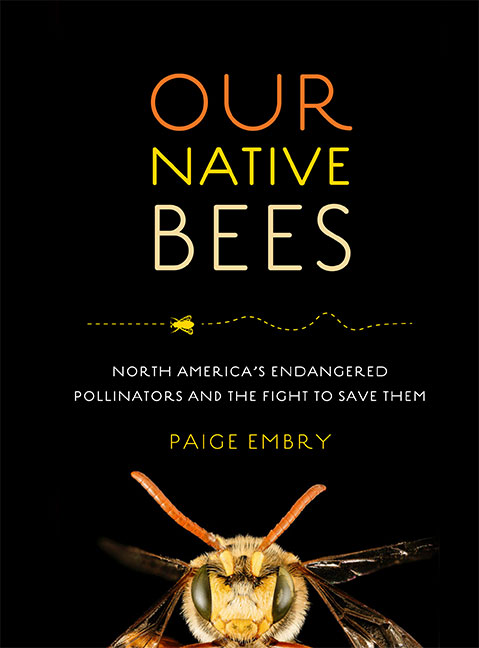Book review: Our Native Bees
By Paige Embry
Publisher: Timber Press
Publish Date: Feb. 7, 2018
Page Count: 224

One day, gardener, geologist and now author Paige Embry learned of a surprising fact: honeybees can’t pollinate tomatoes. Embry read that honeybees — which are imported from Europe — cannot perform buzz pollination. This is a process where a bee holds onto a flower and vibrates certain muscles that shake pollen out of the plant. This discovery launched Embry’s multiyear obsession about the more than 4,000 species of other pollinators, specifically bees that are native to North America. The result informed “Our Native Bees,” a nature book published in February 2018.
In recent years, the press has focused on the grim challenges facing honeybees. Embry argues that the story of native bees, which are essential to the ecosystem and food supplies, is far more captivating. In fact, Embry references the common statistic that one bite out of everything eaten in the United States is thanks to pollinators, stating that many essential nutrients come from fruits and vegetables pollinated by native bees.
To emphasize the importance of these species, Embry’s chapters highlight various native bees, after she dedicates the entire first chapter to honeybees.
Embry also discusses “bee lawns,” which are essentially lawns with flowers that benefit both people and bees. She recalls the 1990s, when several companies produced grass mixes with flowers, called ecolawn or fleur-de-lawn. Their goal was not to help pollinators but to make lawns less needy and require less water, fertilizer, pesticides and mowing, Embry writes. She also references a University of Minnesota study, conducted by Mary Meyer, Marla Spivak and Ian Lane, on creating a bee lawn with clovers. Unfortunately, the study’s authors found that people are wary of “bee lawns” because they are worried about the look of their lawn and what their neighbors think. (Read more about pollinator-friendly yards).
This book is written for audiences of any experience level. Embry’s writing is informal, yet she is passionate in her quest. She doesn’t assume that the reader has prior knowledge about the subject and puts everything in layman’s terms. Despite this, a native bee expert would still find this an interesting read.
“Our Native Bees” reads like a piece written by an investigative journalist. Embry’s scientific questions combined with her storytelling ability make for a very compelling book. The layout of the text displays multiple sidebars and stunning images, some of which Embry took herself. The end product is a beautiful and fascinating publication.
Reviewed by Hannah Gillespie
Remarkable Pollinators
Related Articles
Latest News

Leave a comment
Your email address will not be published. Required fields are marked *





Leave a Comment